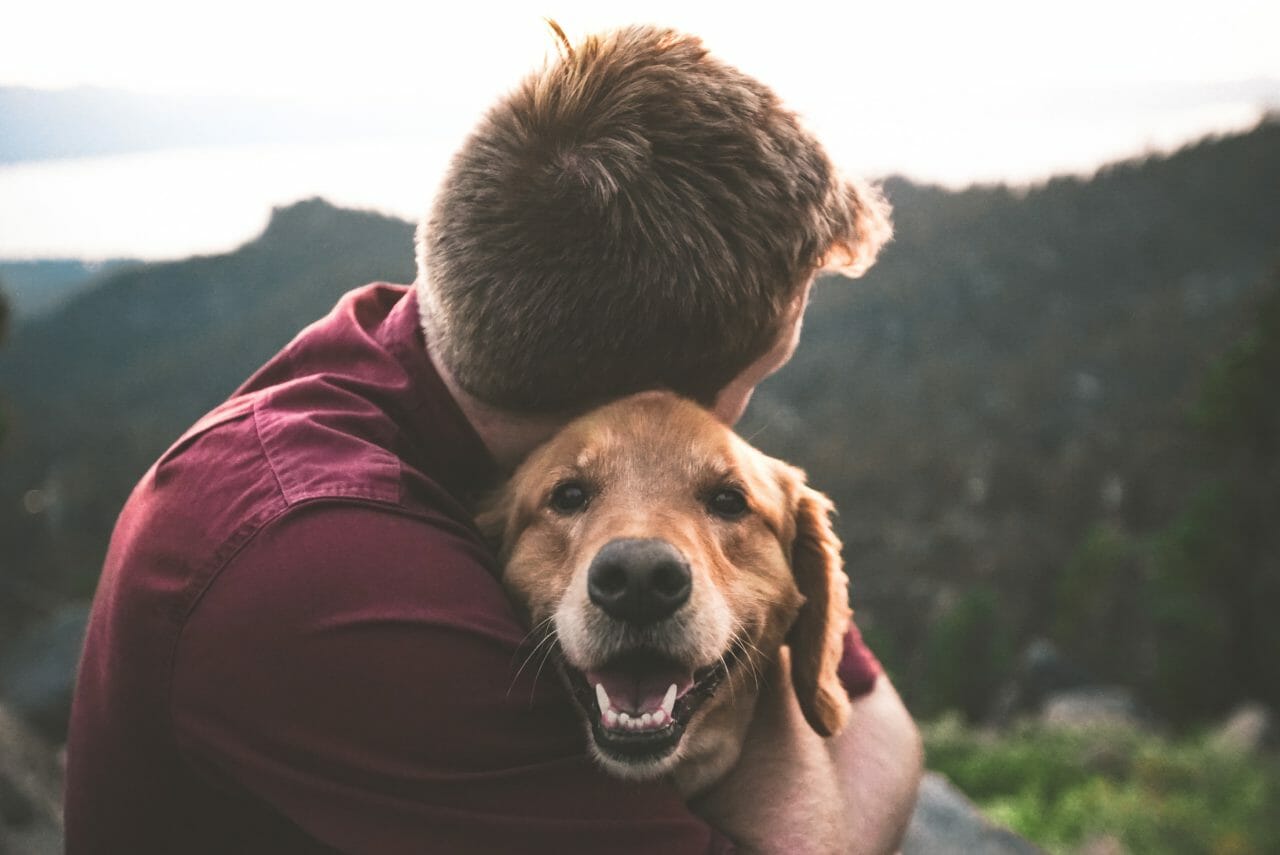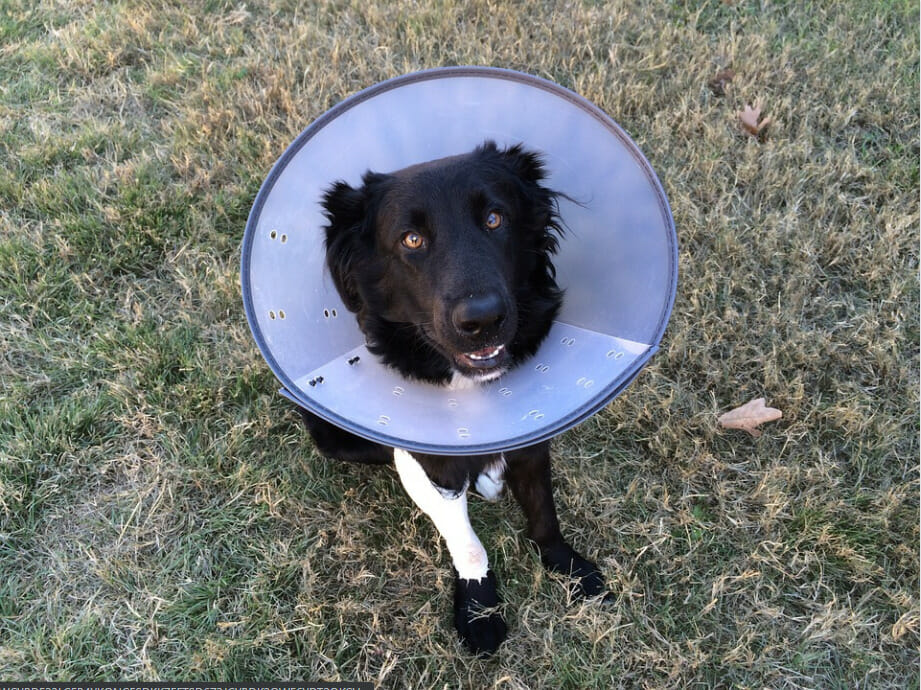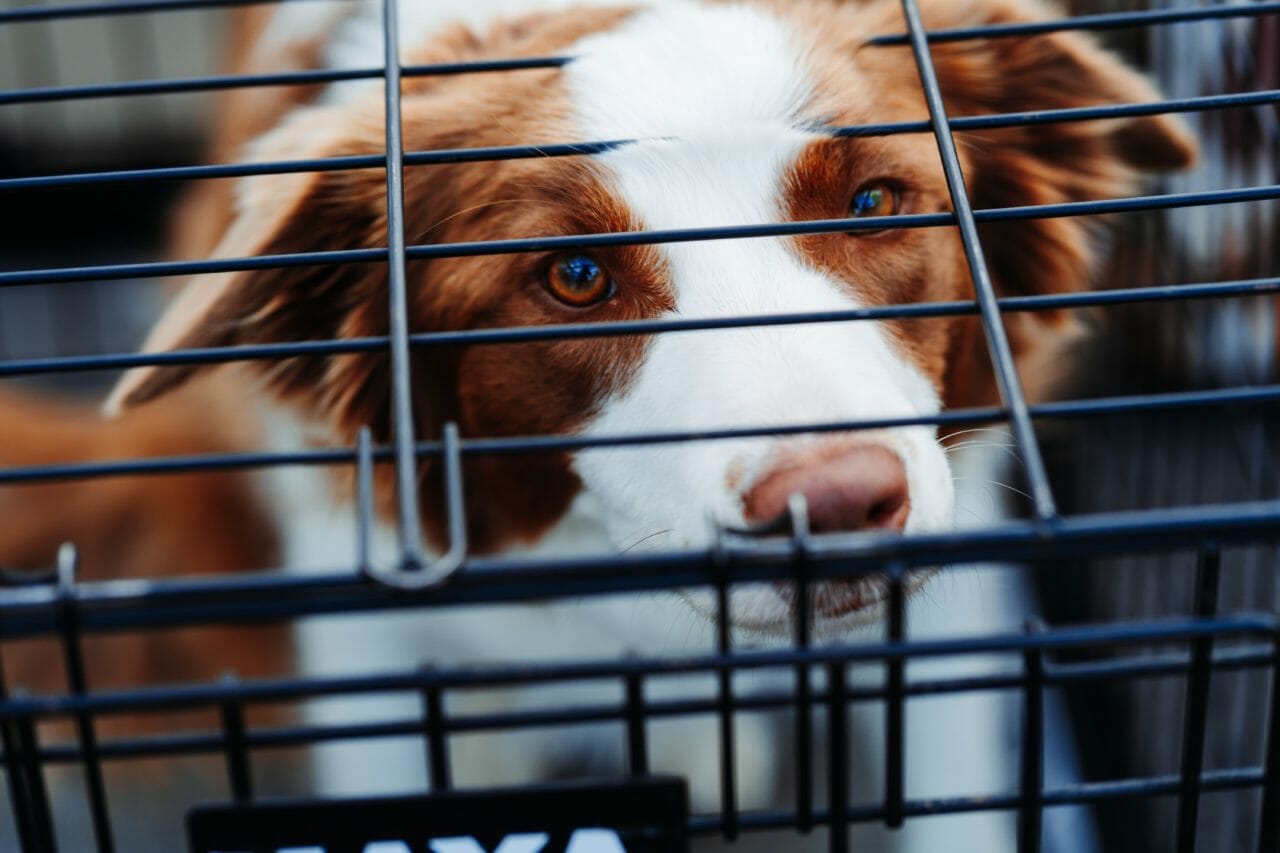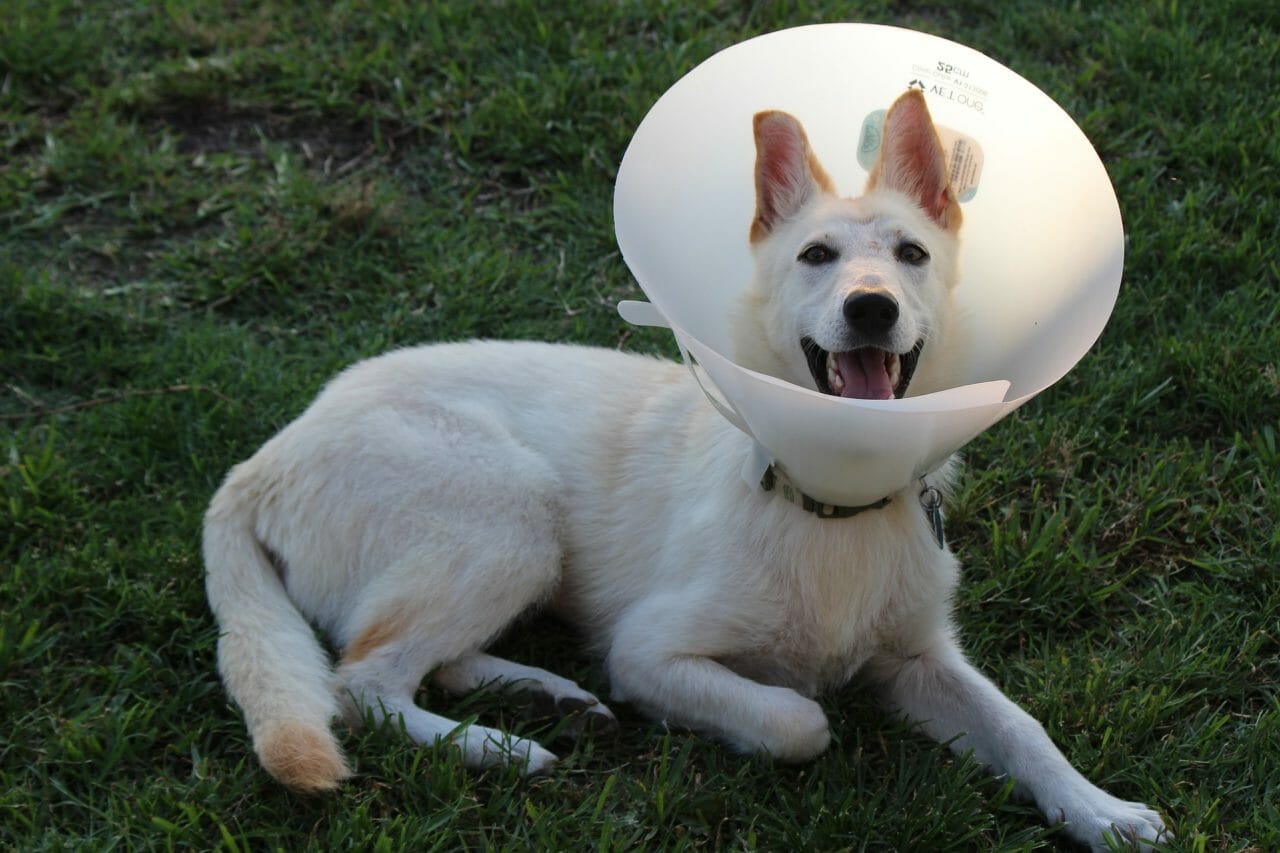Know the details on how to help your favorite pup from this common dog injury.
Playing catch with their favorite ball or going for a walk to the park are all incredibly fun ways to get out with your pups and get both of you some exercise.
But for many middle-aged and larger dogs with more mass to carry around, one of the most common issues that they face is an Achilles tendon rupture. These are very painful and can leave your dog constantly limping and not being able to do many of the physical activities they once enjoyed to their full potential.
RehabPet.com takes a closer look at how an Achilles tendon rupture can impact your furry friend.
What Is an Achilles Tendon Rupture?
Getting its name from the mythological figure who was brought down by an arrow to his heel, the Achilles tendon is a common injury site in both humans and animals.
The Achilles tendon in dogs is the large tendon that runs down the back of their leg and connects their calf muscle to their heel. This tendon is what helps them extend their hind leg when they walk, run, or jump.
Also known as “dropped hock”, an Achilles tendon rupture is a partial or complete tear of this tendon from the heel bone. This can be caused by either an injury or degeneration of the tendon over time.
It is important to take your dog to the vet as soon as possible so they can diagnose the problem and come up with a solution. Lameness is when a dog starts to limp or has an abnormal gait due to pain or injury.
When left untreated, permanent damage to the tendon can occur and your dog may always have lameness in that leg.
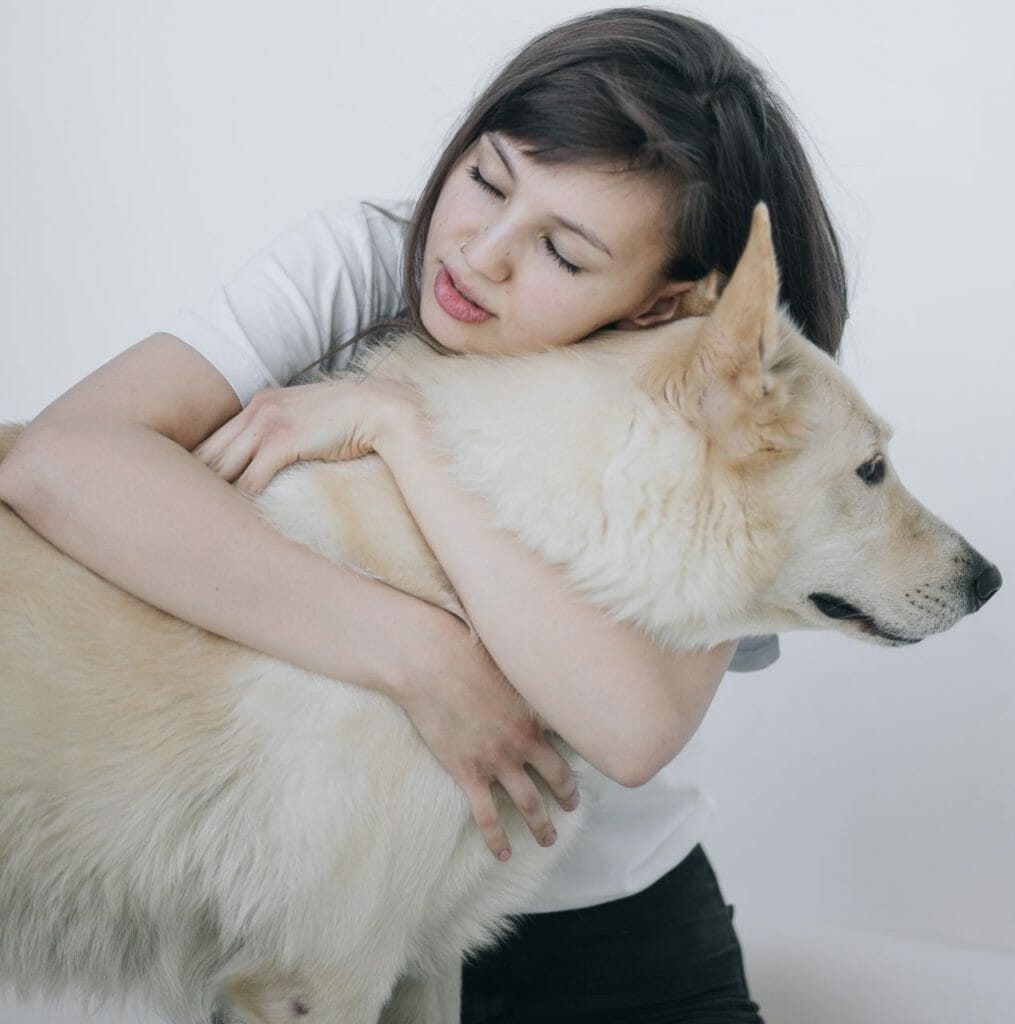
What Are the Causes of an Achilles Tendon Rupture?
There are two main causes of an Achilles tendon rupture:
- An Acute Injury: This is usually the result of a high-force trauma to the tendon, like being hit by a car. It can also happen if your dog falls from a height or suddenly changes direction while running at full speed.
- Degenerative Changes: These are changes that happen to the tendon over time as your dog ages. The tendon can start to weaken and stretch, making it more susceptible to rupture.
Obesity can also contribute to degenerative changes in the tendon. Weakened Achilles tendons can also be caused by poor nutrition and tendonitis. Tendonitis is when the tendon becomes inflamed and is a common condition in older dogs.
What Are the Symptoms of a Ruptured Achilles Tendon?
If your dog has a ruptured Achilles tendon, they will most likely have a sudden onset of lameness in the affected hind leg.They may hold their leg up or keep it in a flexed position and be unwilling to put any weight on it.
You may also notice that your dog is struggling to stand up or walk on their own. In more severe cases, your dog may even drag their hind leg along the ground when they walk.
Be sure to look for other visual and audio cues like yelping or whining when they move. Swelling and bruising is another common symptom you may see around the affected area.
If your dog has a partial tear of the tendon, they may still be able to walk on their own, but you will likely see them limping. Make sure if any of these symptoms are present to take them to your vet right away.
How Is a Ruptured Achilles Tendon Treated?
When you first bring your pup to the vet, they will likely do a physical examination and ask you about the symptoms and when they first started.
They may also order diagnostic tests like X-rays or an MRI to get a better look at the tendon and see the extent of the damage. Once they have a diagnosis, they can start to develop a treatment plan.
There are two main treatment options for a ruptured Achilles tendon: surgery or rehabilitation therapy.
Surgery is typically recommended if the injury is severe and the dog cannot walk. The surgery involves repairing the tear and securing the tendon to the bone with stitches or screws.
Rehabilitation therapy is recommended for less severe injuries and involves a series of exercises gradually increasing in difficulty to help strengthen the tendon. Rehabilitation therapy aims to restore as much function to the leg.
Many dogs will require a combination of both surgery and rehabilitation therapy to fully recover. Recovery time varies depending on the severity of the injury but can take anywhere from a few weeks to a few months.
Your dog will likely need to stay on crate rest and have restricted activity during their recovery. They will also need to wear a splint or brace to immobilize the leg and prevent further injury.
Your vet will likely give you specific instructions on how to care for your dog during their recovery and when they can start to slowly increase their activity level.
How To Prevent an Achilles Tendon Rupture
There are a few things you can do to help prevent an Achilles tendon rupture.
First, be sure to keep your dog at a healthy weight to avoid putting extra strain on their tendons. You should also feed them a well-balanced diet to ensure they are getting all the nutrients they need for strong tendons.
Second, make sure they get plenty of exercise to keep their tendons strong. Avoiding high-impact activities, like running on hard surfaces, is also important.
If your dog has any previous injuries or conditions that have caused tendonitis, be sure to have them checked out by a vet and follow their recommended treatment plan.
Third, b e sure to warm up your dog before any exercise and start with lower impact activities before moving on to anything more strenuous. Just because they don’t have any history of injuries doesn’t mean they can’t happen.
By following these simple tips, you can help prevent your pup from becoming a dropped-hock dog and keep them healthy for years to come!
